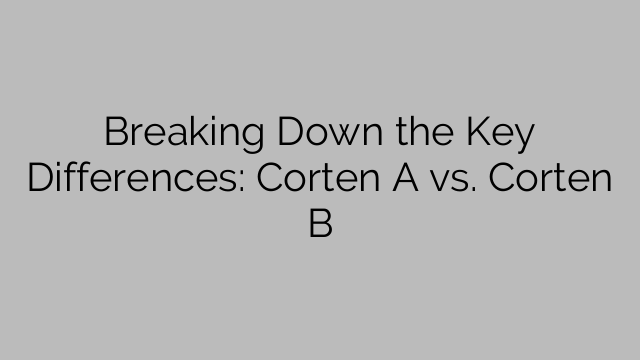1. Chemical Composition:
The main difference between Corten A and Corten B lies in their chemical composition. Corten A is primarily made up of iron with additions of copper, chromium, and nickel, while Corten B consists of primarily iron, with smaller amounts of copper, chromium, and nickel. This variation in chemical composition gives each type its unique properties.
2. Yield Strength:
Yield strength refers to the maximum amount of stress that a material can withstand without undergoing permanent deformation. Corten A has a higher yield strength compared to Corten B, making it more suitable for structural applications, such as bridges or buildings that require high strength and load-bearing capacity.
3. Tensile Strength:
Tensile strength measures the maximum amount of stress that a material can withstand before breaking or fracturing. Corten B has a slightly higher tensile strength than Corten A, which means it has better resistance to tension forces. This makes Corten B an excellent choice for applications that will experience high wind or seismic loads.
4. Weldability:
Both Corten A and Corten B have excellent weldability properties, but they require different welding techniques. Corten A can be welded using any conventional welding methods such as MIG, TIG, or SMAW (shielded metal arc welding). On the other hand, Corten B requires a special welding process known as “core wire” or “filler material” welding to achieve optimal results. Therefore, if your project involves a lot of welding, it is essential to consider this difference.
5. Appearance and Patina:
Corten steel is known for its distinctive appearance and the formation of a protective patina over time. The patina acts as a barrier against further corrosion, making Corten steel highly resistant to atmospheric corrosion. Both Corten A and Corten B develop a similar rust-like appearance, but Corten B tends to have a darker and richer color due to its higher copper content.
In conclusion, while Corten A and Corten B share many similarities, including their weather-resistant properties and distinctive appearance, there are significant differences in their chemical composition, yield strength, tensile strength, weldability, and the resulting patina. Carefully considering these differences will help you make an informed decision when choosing the appropriate type of Corten steel for your project. Whether you require higher strength or better resistance to tension forces, understanding the nuances between Corten A and Corten B will ensure that your structure stands the test of time and aesthetics.
[ad_2]

